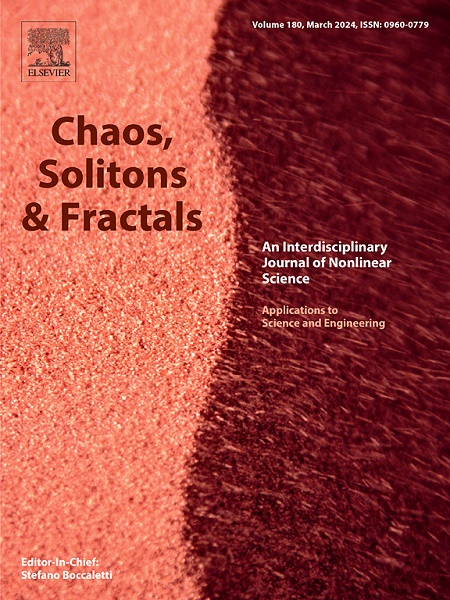在有两个竞争群体的社会中,社会等级制度的出现
IF 5.6
1区 数学
Q1 MATHEMATICS, INTERDISCIPLINARY APPLICATIONS
引用次数: 0
摘要
描述个体之间社会互动的基于主体的模型有助于更好地理解社会中新兴的宏观模式。其中一个值得解决的话题是在城市等社会空间中出现的不同等级的形成。在这里,我们通过添加第二组代理提出了一个类似博纳博的模型。我们的模型的基本特点是,只允许相反组的代理之间的两两相互作用。因此,Agent的适应度只能通过两个群体之间的竞争来改变,而社会的总适应度保持不变。主要结果是,对于模型参数的大范围值,除了一个或极少数捕获了社会中几乎所有适应度的智能体外,每组智能体的适应度随时间而衰减。数值模拟还揭示了每个群体从平等社会到等级社会的独特转变。这种行为取决于控制参数η,它起着与系统温度相反的作用。对于系统大小,结果是不变的,仅取决于每组中代理的数量。最后,提供了标度定律,从而显示了来自不同模型参数的数据崩溃,并且它们遵循可以与模型中存在相变相关的形状。本文章由计算机程序翻译,如有差异,请以英文原文为准。

Emergence of social hierarchies in a society with two competitive groups
Agent-based models describing social interactions among individuals can help to better understand emerging macroscopic patterns in societies. One of the topics which is worth tackling is the formation of different kinds of hierarchies that emerge in social spaces such as cities. Here we propose a Bonabeau-like model by adding a second group of agents. The fundamental particularity of our model is that only a pairwise interaction between agents of the opposite group is allowed. Agent fitness can thus only change by competition among the two groups, while the total fitness in the society remains constant. The main result is that for a broad range of values of the model parameters, the fitness of the agents of each group show a decay in time except for one or very few agents which capture almost all the fitness in the society. Numerical simulations also reveal a singular shift from egalitarian to hierarchical society for each group. This behaviour depends on the control parameter , playing the role of the inverse of the temperature of the system. Results are invariant with regard to the system size, contingent solely on the quantity of agents within each group. Finally, scaling laws are provided thus showing a data collapse from different model parameters and they follow a shape which can be related to the presence of a phase transition in the model.
求助全文
通过发布文献求助,成功后即可免费获取论文全文。
去求助
来源期刊

Chaos Solitons & Fractals
物理-数学跨学科应用
CiteScore
13.20
自引率
10.30%
发文量
1087
审稿时长
9 months
期刊介绍:
Chaos, Solitons & Fractals strives to establish itself as a premier journal in the interdisciplinary realm of Nonlinear Science, Non-equilibrium, and Complex Phenomena. It welcomes submissions covering a broad spectrum of topics within this field, including dynamics, non-equilibrium processes in physics, chemistry, and geophysics, complex matter and networks, mathematical models, computational biology, applications to quantum and mesoscopic phenomena, fluctuations and random processes, self-organization, and social phenomena.
 求助内容:
求助内容: 应助结果提醒方式:
应助结果提醒方式:


